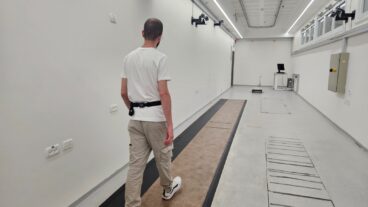Femarelle has been proven in clinical studies to exert stimulatory activity on the estrogen receptors that control menopausal symptoms and the process of bone build-up, while having a blocking effect on estrogen receptors in the breast and the uterus.The connection between menopause and osteoporosis is well-documented. At the onset of menopause, following the decrease of estrogen in the body, the bone undergoes a yearly decline of bone mass density (BMD) of 2-3% per year in the first seven years following menopause. This leads to the development of osteoporosis, which affects one in two postmenopausal women today.
Slowing the process of bone loss, while alleviating menopausal symptoms, requires a therapy that targets the physiological mechanisms affected by estrogen. And the general treatment prescribed by doctors has traditionally been hormone therapy.
However, a consensus is growing throughout the medical world regarding the increased risk of blood clotting for women taking hormones. Fifteen to 20% of women have a genetic history of blood clotting, and many recent studies point to increased health risks associated with hormone therapy.
“Unfortunately, hormone therapy has risky side effects for some women. Hormones increase the risk of clot formations, which can lead to stroke,” explains Dr. Israel Yoles, an Israeli gynecological expert who practices at the Sheba Medical Center, and runs the Ashdod Center for Women’s Health.
As one in five women are exposed to such life-threatening risks, physicians have faced a major dilemma regarding how to manage the symptoms associated with the onset of menopause.
“The medical community is anxious to find a solution – which can fight the acute symptoms of menopause without increasing chances of blood clotting,” explains Yoles, who is also the medical director of Se-cure Pharmaceuticals Ltd., a company which has developed a treatment that it believes could be the solution.
Se-cure’s flagship product Femarelle, which is now available in 15 countries around the world, is derived through a unique enzymatic procedure that creates a specific biochemical composition proven to combine the treatment of menopausal symptom relief and bone loss.
“Femarelle activates the estrogen to relieve menopausal symptoms and help prevent osteoporosis, but it won’t activate the estrogen where it’s not wanted, like in the breasts or the uterus,” Yoles told ISRAEL21c.
He explained that for such a therapy to be safe, it must be selective – affecting estrogen receptors only in specific sites without affecting tissues where any change can have dangerous consequences. Which is exactly what Femarelle does – acting as a novel Selective Estrogen Receptor Modulator (SERM) drug.
“The idea behind the category of SERM drugs was to produce a compound which acts selectively in activating estrogen in various parts of the body,” said Yoles.
Femarelle has been proven in clinical studies to exert stimulatory activity on the estrogen receptors that control menopausal symptoms and the process of bone build-up, while having a blocking effect on estrogen receptors in the breast and the uterus. Moreover, Femarelle was shown to have a unique mechanism of action on bone build-up through increased osteoblast activity, having a direct effect on bone formation.
“We’ve shown it’s efficacy and safety in numerous clinical trials, and can now say that Femeralle effectively treats menopausal symptoms and elevates bone mass density, but at the same time selectively delivering the estrogen to the body,” said Yoles.
Earlier this month, findings of the effectiveness of Femarelle were presented to the international medical community at the 7th Congress of the European Society of Gynecology in Paris by Dr. Lila Nachtigall, former president of the North American Menopause Society (NAMS), and director of the Women’s Health Center at NYU.
“She’s well known around the world for her work in menopause studies,” said Soles. “Her studies have shown that women who displayed no clotting problems responded to oral estrogen fine. But women with borderline clotting signs had accelerated clotting signs after taking the estrogen. The tendency to produce clots is aggravated due to taking oral estrogen.”
However, Nachtigall’s recent study on Femeralle which was presented in Paris focused on women with clear cut clotting problem who couldn’t be given estrogen. The findings showed that when given Femeralle, the women with clear cut clotting problems showed no increased clotting signs.
“People who heard the presentation in Paris were very excited about the results,” said Yoles, who attended the meeting with Nachtigall. “And just as importantly as the results on its efficiency, the study showed that Femarelle was safe.”
That point is utmost of utmost concern for both Yoles and Se-cure’s CEO Ron Gutterman, who founded the company in 1997.
“The new generation treatments need to show evidence of more than therapeutic relief; proof that the risks do not outweigh the benefits of treatment is at the forefront of consumer concern,” said Gutterman. “The new age drugs are expected to integrate treatment of the different mechanisms involved in illness and to target the cause of an illness, rather than only its symptoms. The successful development of Femarelle has cemented this concept.”
Femarelle was launched in 1999. “What we’re saying ultimately, is that if a doctor prescribes hormone therapy, then fine,” said Yoles. “But there is growing concern among both doctors and women who are hesitant to take the hormone treatment. So try Femarelle as first line of treatment. It’s been proven to be safe and effective.![]()
Slashdot It!![]()












